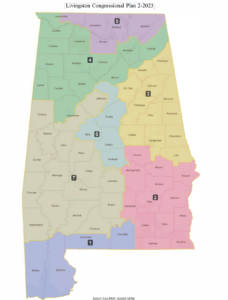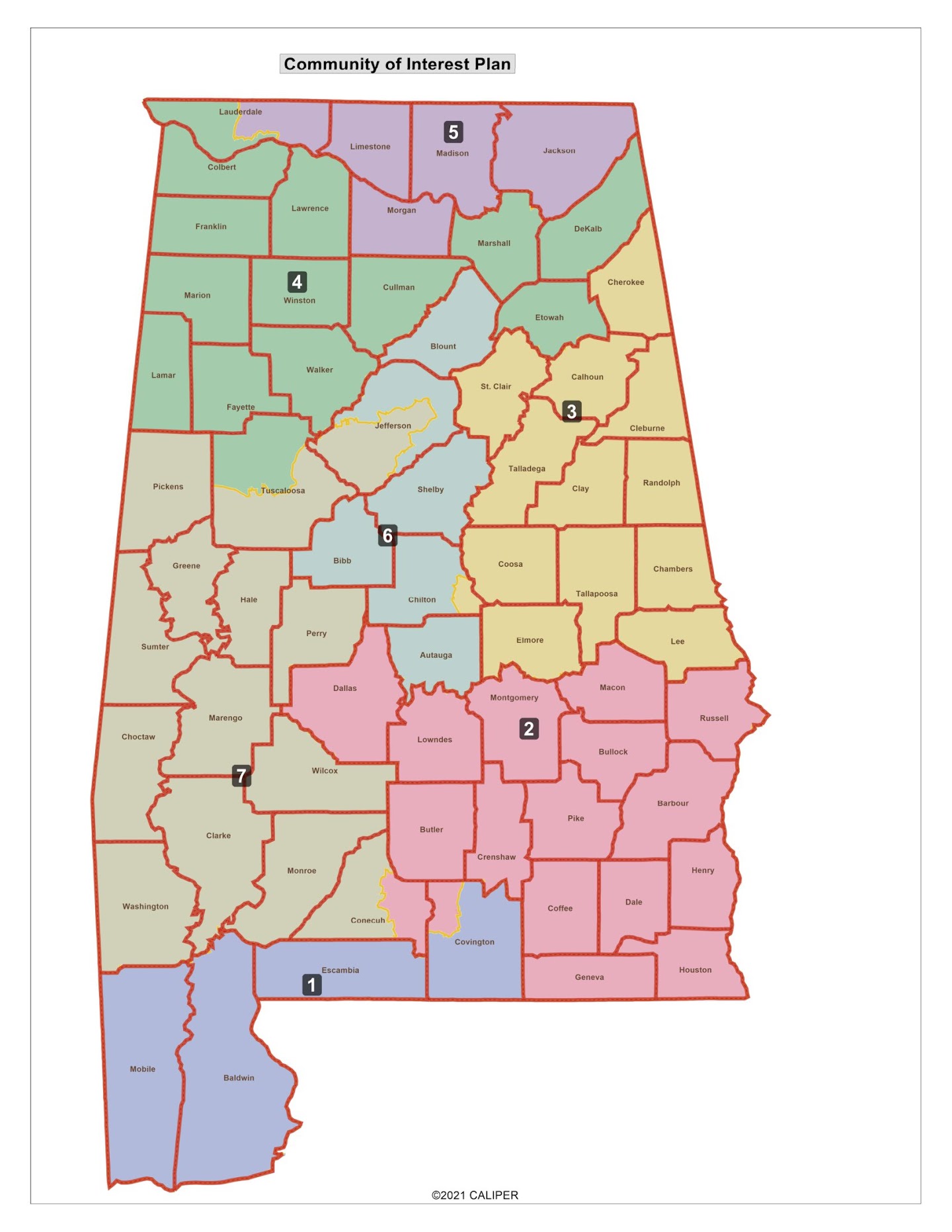State lawmakers spent day four of the special session advancing two redrawn congressional map proposals – one from the House and one from the Senate.
House committee members moved forward the Senate-approved version, the Livingston Plan while a Senate committee approved the House-approved version, the Community of Interest Plan.
RELATED: Committee advances redistricting map
On Friday, the formal July 21 deadline imposed by the U.S. Supreme Court, both chambers will meet and consider final passage of those plans. From there, a joint conference committee is expected to reconcile a final proposal that will ultimately be sent to Washington for a federal final say.

Both plans making their way through the Legislature are promoted to have neutral principles that promote “communities of interest” such as the Alabama Black Belt, Wiregrass and
While lawmakers say over 100 plans were submitted, these two finalist maps will become some variation of the result, with demographic data being the central element.
Pringle’s Communities of Interest map would maintain one majority-Black congressional district (AL-07) with the second largest (AL-02) moving to 42%. The Livingston Plan’s AL-02 majority-black proposal would sit at 38%
The specific language of the Supreme Court ruling requires that “any remedial plan will need to include two districts in which Black voters either comprise a voting-age majority or something quite close.”

In the Senate committee meeting Thursday, Sen. Roger Smitherman (D-Birmingham) sought independent clarification on some key points.
Othni Lathram, who shared impartial expertise from his view as director of the Legislative Services Agency, commiserated the abstract benchmarks lawmakers are having to consider and offered an overview of the current moment.
“What the Supreme Court said was, ‘we agree with the three judge panel. We think there was enough evidence at that preliminary injunction phase, that there’s a likelihood that the Voting Rights Act was was not complied with,'” he said. “‘We think that the population of the state of Alabama under existing precedent they didn’t really make any new law on that order.
“‘And therefore, we think that that in all likelihood, the population of the state of Alabama would support to, to otherwise appropriate districts within a map that still looks at community of interests still is compact, but but also considers race, and that at least two districts should should likely be at least opportunity districts where the minority population has an opportunity to win an election with a candidate of their choice.
“‘And the state of Alabama was response was, ‘we’d like an opportunity for you to consider a map different than the one you have before you.'”
“And that’s why we’re here. Now, again, as the non-expert, legal counsel, generally – I certainly understand that. It’s also frustrating because I don’t think the court gave us a whole lot of specific guidance about how to make that map better.”
In brief meetings of the full House and Senate chambers, legislative leadership thanked members for their participation and engagement, even though much of the work is being handled in the committee process.
Grayson Everett is a staff writer for Yellowhammer News. You can follow him on Twitter @Grayson270
Don’t miss out! Subscribe today to have Alabama’s leading headlines delivered to your inbox.
